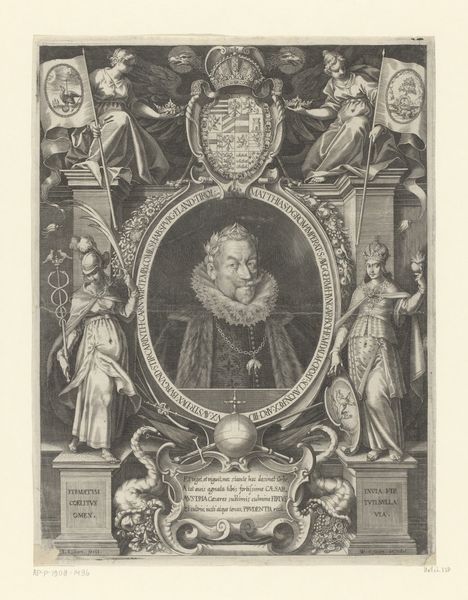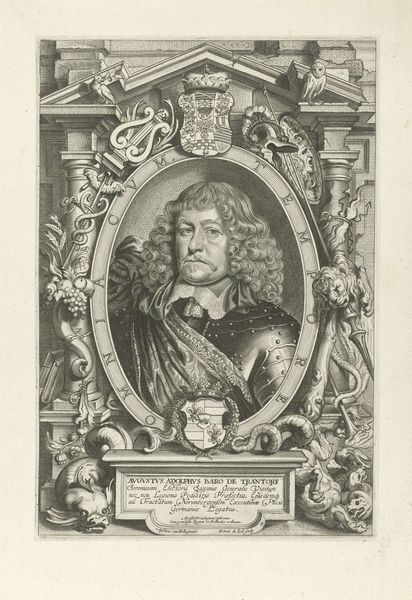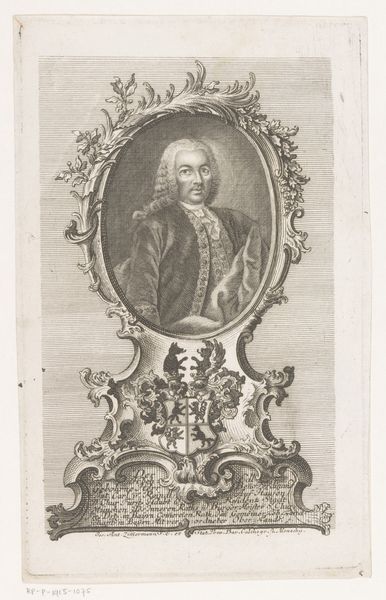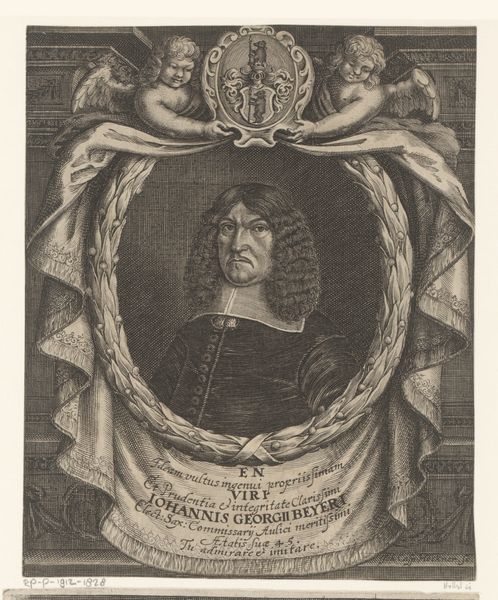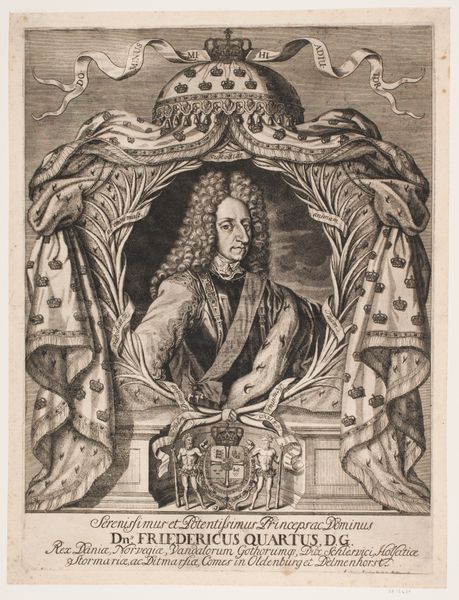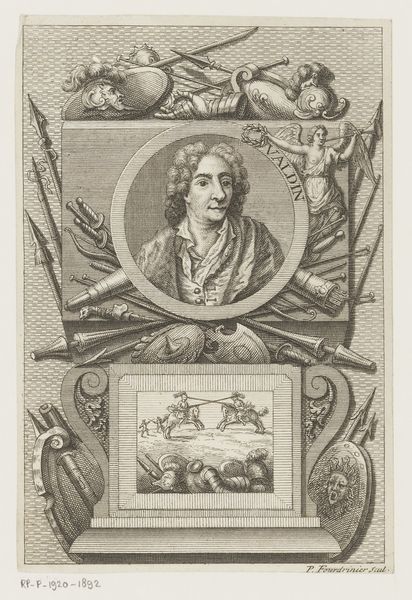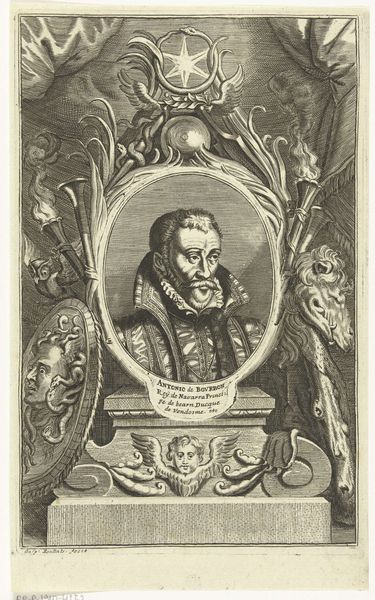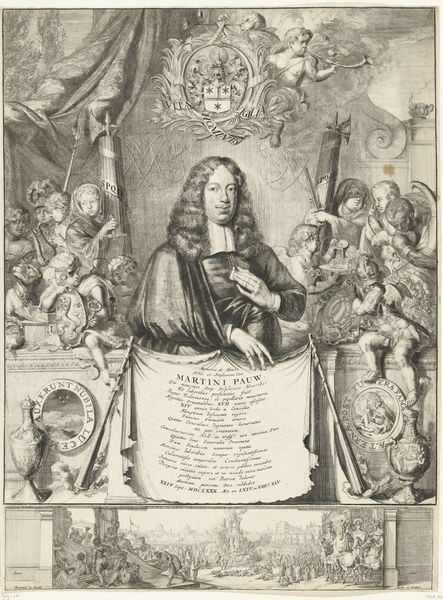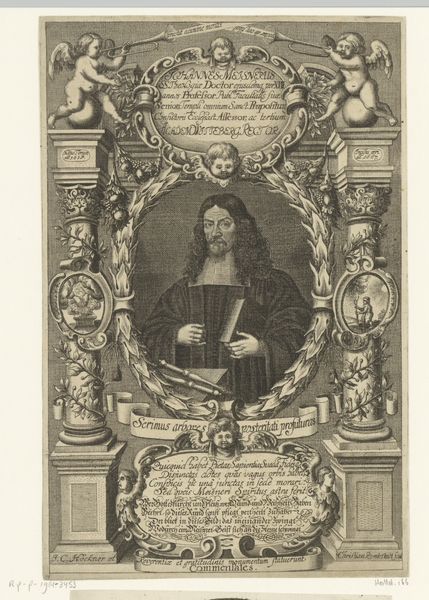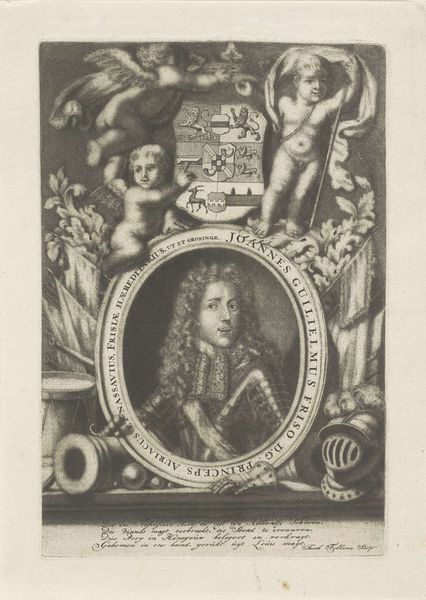
print, engraving
#
portrait
#
baroque
# print
#
history-painting
#
engraving
Dimensions: height 165 mm, width 110 mm
Copyright: Rijks Museum: Open Domain
Curator: At the Rijksmuseum, we find "Portret van Eiler Holk", a baroque engraving by François van Bleyswijck, placing us roughly in the late 17th to early 18th century. What is your first take? Editor: It's undeniably ornate, and quite layered—almost crowded. The composition presents several portraits contained within another ornamental frame, complete with weaponry and heraldry. Curator: Let’s look at its construction. Van Bleyswijck balances two forms of portraiture: one is a traditional bust in the upper-left corner and, the second, is a life-size portrait centrally framed and positioned above Holk’s coat of arms. Both feature similar landscape backdrops which add to the density of the work. Editor: Indeed. The density itself is interesting. What sociopolitical statement is made through the visual clutter? It seems like Holk is almost attempting to legitimize himself within that artistic and visual lineage. Curator: Consider the iconography as deliberate symbolism—the draped weaponry as evidence of a life spent in martial pursuits; two, semi-nude figures flank his coat of arms… it underscores power, ancestry, and legitimacy. Editor: Precisely. It speaks volumes about how historical figures consciously curated their public image. Bleyswijck's engraving technique would have afforded multiple impressions, increasing the public dissemination of Holk's curated persona. Curator: The formal presentation also gives an illusion of three dimensions. See the carefully placed shadows that fall within each portrait and across the instruments of war. The contrast is quite masterful! Editor: Right! Considering that the artwork originated as a print—probably functioning as part of larger collection, it stands out because it showcases the artist's awareness of historical contexts to deliver specific sociopolitical messages. Curator: So, despite the surface-level formality of it all, the artistry in this portrait pushes it past mere record-keeping; it truly encapsulates the political motivations inherent in commissioning such work. Editor: Ultimately, the portraits by Bleyswijck invite us to consider the calculated effort individuals undertook to fashion and disseminate specific legacies, and the institutions in place to do it.
Comments
No comments
Be the first to comment and join the conversation on the ultimate creative platform.
